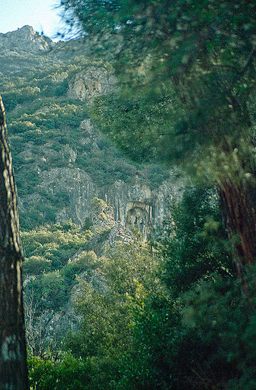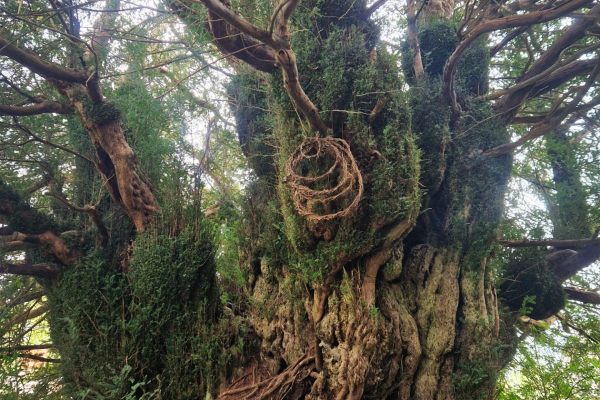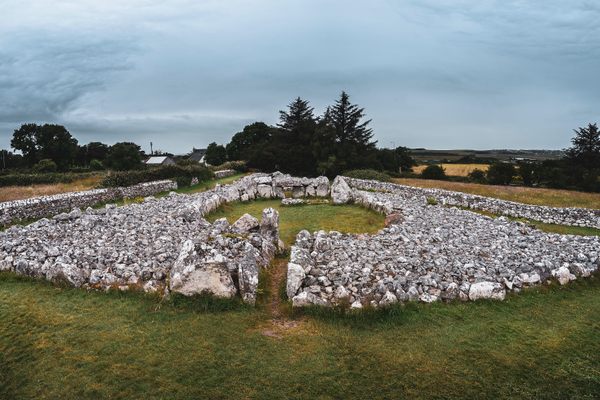Manisa Relief
This mysterious cliffside carving of an ancient Hittite deity has baffled scholars for centuries.
A timeworn relief overlooks the city of Manisa, Turkey. It’s carved into a niche within a cliff on Mount Sipylus, and is so weathered and eroded it looks as though it’s in danger of crumbling from existence at any second.
If you look at the cliff closely, you can see the faded shape of a seated human sculpted into the granite. The figure wears what looks like a tall headdress, though over the centuries, the elements have gnawed away much of its head. Its arms rest across its chest, and its feet lie atop a stool.
Not much is known about the mysterious artwork. Because of the hieroglyphics next to the figure, it’s believed to have been created by the Hittites, an ancient Anatolian civilization whose empire peaked in the 14th-century BC.
Rock reliefs are fairly common within Hittite religious art. As such, it’s thought this relief depicts a deity of some sort. Pausanias, the second-century Greek geographer, wrote that it depicted Cybele, the Anatolian mother goddess. But scholars from the 18th and 19th centuries have proposed that it could be a weather or mountain god.















Follow us on Twitter to get the latest on the world's hidden wonders.
Like us on Facebook to get the latest on the world's hidden wonders.
Follow us on Twitter Like us on Facebook